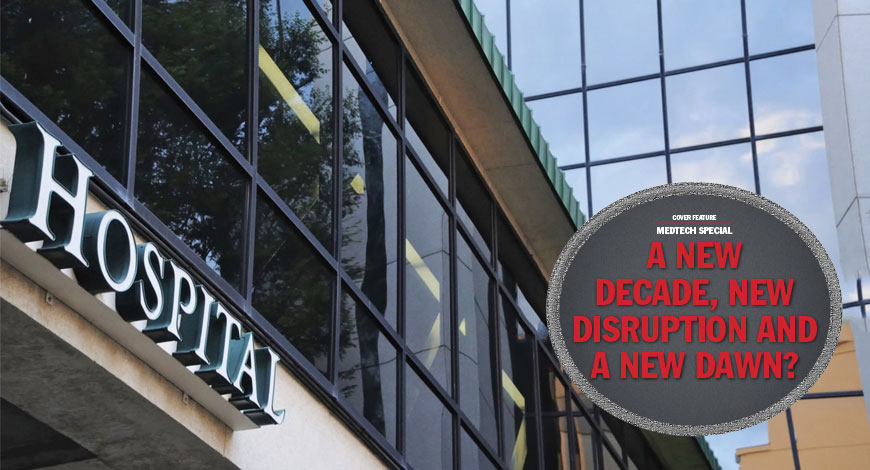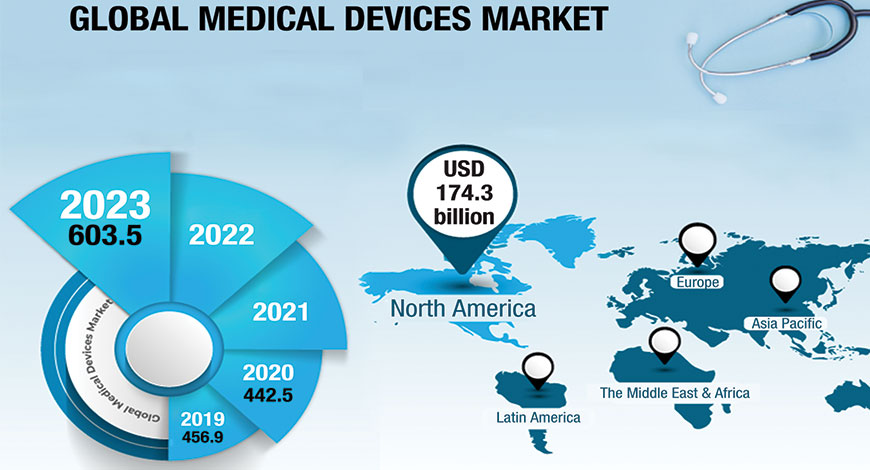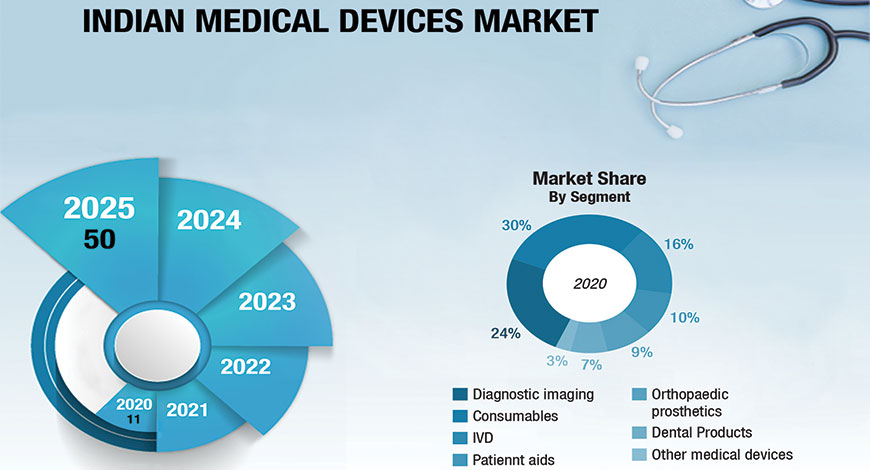MB Stories
A new decade, new disruption and a new dawn?

The COVID-19 pandemic has brought to the fore the need for improvement in business models, supply chains, and regulatory relationships
COVID-19 is a global crisis, evolving at unprecedented speed and scale. The MedTech industry has been challenged as never before to re-imagine designs of mission critical devices, dramatically ramp-up production capacity, and get essential equipment such as ventilators and personal protective equipment to clinicians and patients on an immediate basis. MedTech companies have moved quickly and risen to the challenge.
MedTech is seeing unprecedented product innovation in the race to fight COVID-19. Inventive engineers and clinicians are retrofitting or reimagining products in limited supply for new and expanded use. Regulatory agencies realize this and are adapting at a break-neck pace—foregoing standards that are lengthy to achieve speed-to-patient.
However, supply chain resilience continues to be tested as companies scramble to re-allocate and ramp-up manufacturing to address supply shortages and government protectionism. MedTech is adapting their supply chains—and collaborating across multiple industries where there are gaps—urgently addressing these issues.
Pandemic opens up new opportunities
The underlying drivers for MedTech’s transformation have been increasingly evident in recent years, and in many respects, the COVID-19 pandemic has accelerated them and created more urgency. The rise of connected devices is drawing MedTech into the Internet of Things and opening up new opportunities for data-driven improvements in clinical outcomes. Meanwhile, healthcare systems face growing cost constraints, and patient-consumers are increasingly demanding a more customer-centered healthcare experience.
Now, the industry has the chance to address its limitations and better position itself to thrive in the next and the beyond, in following key areas.
Changing business models
At the beginning of 2020, most physicians were not using virtual health in their patient interactions—but six months after that, 95 percent had increased their use of virtual technology, with 58 percent of them increasing it by over 50 percent, according to a recent EY survey conducted for the US market. The movement toward virtualized, remote-operated business models for medical care is accelerating faster than anyone had imagined at the start of 2020.
The need for remote care of chronic diseases has suddenly become more relevant than ever before, and MedTech is already at the forefront of delivering this new model, particularly with the rise of diagnostics and the integration of diagnostics with remote care delivery. Beyond chronic diseases, populations worldwide face the challenges of maintaining mental and physical health while being cut off from normal routines. In recognition of this, the FDA lowered barriers to bringing behavioral therapy devices to market in April 2020, with the aim of heading off a potential mental health crisis.
Yet not all business model change is based on virtualization of care. As new health challenges emerge, new breakthrough innovations are needed to address them: in 2020, MedTech players have aimed not only to rapidly design, redesign or retrofit devices that can help with the COVID-19 crisis management, but also to bring forward innovative offerings that can address the crisis.
Efficient producers, too, have never been as vital as in 2020, with health systems worldwide needing commodity equipment, from protective personal equipment, ventilators, and diagnostics to many other hospital basics, at scale and at speed. Efficient producers with robust and agile systems for manufacturing and distribution have been at the forefront of MedTech’s efforts to mitigate the disruptions caused by the pandemic. Not least among these disruptions has been its impact on global supply chains.
Supply chain transformation
The COVID-19 pandemic has placed healthcare systems around the world under tremendous pressure, which has in turn posed a major challenge for the MedTech industry to meet increased demand for its products. In recent months, MedTech companies have learned a lot about their supply chains, as the pandemic exposed vulnerabilities in both supply-chain infrastructure and its performance—leaving many companies reflecting that, we did not know what we did not know. Now that these vulnerabilities have surfaced, there is an imperative to address them. The alternative could leave the same supply chains exposed not only to future waves of the pandemic, but also to other supply-chain shocks.

Supply chain issues for MedTech did not begin in 2020. Industry insiders have in the past noted the inefficiencies associated with supply intermediaries and inflexible legacy systems, in addition to the lack of transparency for regulators and companies alike. Concerns around supply chain visibility and efficiency were already at the forefront of industry discussions, with companies considering the wider use of analytics to address these issues, reduce costs, and better meet their customers’ changing demands.
Moreover, nationalistic criticism of globalized operating models also preceded the pandemic, and these tensions look set to continue no matter how the COVID-19 pandemic plays out from this point. MedTech companies are obliged to assume a disrupted global political environment for the foreseeable future.
Companies in the industry are scaled for efficiency, not redundancy. Using digital technology and data could be used to track how much scale redundancy suppliers have and whether they can pivot toward greater production. In the longer term, the industry will need to accommodate the ongoing reality of travel restrictions between countries and even between US states. The industry also may need to bring some manufacturing capacity back to the US or Europe, to safeguard the supply base.
And as business models change, new supply chain problems also will arise. Consider the rise of remote care: in an anytime, anywhere model, how can MedTech companies shift their supply chains to accommodate this change? Moreover, as medical devices become ever smarter and more reliant on software and data, this will increase the need for MedTech companies to take a broader product life cycle approach to their devices.
A revolution in regulation
Whatever the lasting commercial impact of the pandemic, industry can see already that it has transformed regulatory norms. Concern over product supply has not only led to increased policymaker involvement in the supply chain, but also significantly cut in the barriers to market entry, with emergency use authorizations (EUAs) gaining acceptance. These EUAs cover many products, including in vitro diagnostics and other tests, personal protective equipment and ventilators, and equipment that can be repurposed as ventilators.
The loosening of regulatory conventions goes beyond EUAs, and it is not only new products that have been accelerated into the MedTech space but also new entrants — for example, multiple companies from outside the sector came together with MedTech companies to meet the demand for vital equipment. Collaboration within the sector has also been facilitated by the authorities confirming that medical device suppliers can collaborate during the crisis without risking violation of antitrust laws, sharing capacity, and expertise as needed.
The receptive attitude of the authorities and other regulatory bodies offers great scope for the industry to shape the dialogue about how it is regulated in future, and partnership is going to become an ever-more vital part of that conversation. Consider the proposed approach to managing AI, which would see the moving away from regulating individual products toward a broader and more continuous assessment of companies as viable partners to bring software and analytics into the market. With the buy-in of regulators, MedTech is well-placed to continue this transformation and usher in a new era of digital, data-driven smart devices that can potentially transform the industry.
Precision medicine begins with precision diagnoses
As industry has seen with the global focus on the pandemic, treating diseases before fully understanding the diagnosis first is suboptimal. Experts know little about the long haul SARS-CoV-2 symptoms. Indeed, an initial diagnosis and treatment of COVID does not fully address all the needs of the one-third of patients who still experience symptoms long after they are cleared for infection. Clinical trials to understand the progression of illness and response to treatment will continue to be a vital step and source of knowledge in this area.
Proper precision diagnoses improve standards of care to ultimately better treat illness, but therapies are not the only answer. It is virtually impossible to optimally choose therapy until physicians have the correct diagnosis, but the question is how? MedTech innovations and AI development are paving the way to quantify limitations healthcare providers currently experience. As medical professionals continue to collaborate with innovators around pain points they experience in their everyday practice, diagnosing illnesses will continue to improve in accuracy and lead to better treatments.
The digital opportunity
While the MedTech industry has always been built on clinical data, the digital world offers far broader, richer sources of data. From environmental data to lifestyle data and real-time data on biological processes captured inside and outside the body, experts are living through a proliferation of data that has the potential to transform healthcare.
Stakeholders acknowledge this. They also recognize that the challenge now is not a lack of data, but a lack of data integration: the data being generated is trapped in silos, and there are multiple challenges to joining it together. In part, these challenges are technical, and the rapid progress of technology makes it likely that they will be overcome.
Other challenges are regulatory. World has seen how fast regulatory adaptation has happened during the COVID-19 crisis; now, experts need to see that adaptation continue, to accommodate the use of data in ways that can transform healthcare.
There is also the challenge of consumer willingness to share their data. Data privacy has presented an obstacle in the past, but recent survey by EY, suggests that 56 percent of consumers would make their personal data available if it helped to monitor and track an infection cluster, potentially opening an avenue for new business models.
Yet perhaps the biggest obstacle to data-driven transformation of the MedTech business model has been the industry’s own reluctance to embrace change. While medical devices increasingly incorporate software and connectivity, many companies have hesitated to make significant investments into building the digital capabilities needed to access and use the ever-expanding wealth of real-world data.
Digital technologies are the keys to enabling the move toward remote care models for chronic disease and for health maintenance, and as such have been the focus of rapidly rising demand during the pandemic. While MedTech valuations have performed more strongly than most other life sciences sectors, digital health has been even more favored by investors, with the Rock Health Digital Health Public Index rising 65 percent between January 2019 and August 2020.
How can MedTech prepare for the future now?
As the healthcare ecosystem becomes more connected, the advances in diagnostics, genomics, AI, and other emergent data technologies will reinforce each other, driving an exponential acceleration toward personalized care. Ultimately, this will transform MedTech in ways that cannot yet be fully anticipated. However, some of the key elements that need to be established for success include:
A cybersecure ecosystem for data exchange. Healthcare data breaches have increasingly been recorded. This level of vulnerability must be addressed before a connected ecosystem can be achieved. Medical devices need to become part of the solution.
Companies that want to win trust should not wait for the regulators to take the lead: they should move proactively to show that they are taking steps to secure both their products and the data ecosystem around their products. The companies that are thinking beyond their own vulnerability to the bigger question of building safe networks to move data around the ecosystem will be best placed to become the trusted partners of the future.
Securing the supply chain. The deficiencies in data availability and trust between stakeholders limit the effectiveness of the MedTech supply chain, making it a prime target for transformation. With connected devices enabling a bidirectional dataflow along the supply chain, companies will have the tools to create more agile logistics capabilities. This will mean using real-time data to understand not just where products are in the market but where they need to be next.
As care increasingly decouples from traditional channels and institutions, the data supply chain will become as critical as the product supply chain, and MedTechs must secure those data streams for themselves and their stakeholders.
Securing the business model. As healthcare evolves toward a more dynamic ecosystem built on data sharing, MedTechs should identify the business model that represents the best vehicle for them to deliver future value. Four distinct business models associated with MedTechs, each with highly specific data and analytics needs have been suggested by EY in a recent report:
- Breakthrough innovators-Medtech has traditionally generated value by creating innovative devices that are tested in clinical trials. Future success depends not just on the cutting-edge hardware but on its ability to connect into a wider data ecosystem, to help deliver better health outcomes. Increasingly, it will be not just a question of creating innovative devices but of demonstrating how their use can drive better outcomes.
- Disease managers-As data capture opportunities increase via connected devices, devices may become highly personalized tools for individual patients to manage their disease – a trend already visible in the diabetes market. Future disease managers will need to look beyond therapeutic area siloes to deliver care holistically, maximizing the use of data to best manage all the patient’s chronic conditions and co-morbidities.
- Lifestyle managers-Consumer electronics devices are already evolving beyond fitness and nutrition applications to provide real-time, medical-grade feedback that can help patient-consumers manage their lifestyles more effectively. The ubiquity of sensors, wearables, and smartphone software represents a huge opportunity for companies to develop this softer side of personalized MedTech.
- Efficient producers-Companies that focus primarily on cutting margins via supply chain transformation can target the significant market in low-tech, commodity MedTech products. To succeed in this market, MedTechs will need to utilize sophisticated data analytics to run operations on as efficient a basis as possible.
Is MedTech ready?
In 2019, MedTech is already creating connected devices. What it cannot create is a connected ecosystem to plug these devices into. That is because building a working, linked-up ecosystem is not a task for the industry to undertake alone–it needs to be a collaborative effort between industry, regulators, providers, payers, and patient-consumers together, and it will also involve technology companies from outside the sector playing an enlarged role. Put simply, if MedTech cannot strengthen its connections with the other stakeholders, it cannot extract full value from its connected devices.
Two major roadblocks prevent the industry from forging closer collaborative links with other stakeholders:
- First, the technical challenge-The lack of interoperability between the data-management systems used across healthcare means that data are locked in siloes. Without a shared digital infrastructure, there’s no mechanism to allow data to flow seamlessly between stakeholders.
- Second, there is no incentive for other stakeholders to work together on developing that digital infrastructure if they do not feel that MedTech companies are aligned with their values. There are few precedents for stakeholders collaborating at the scale needed.

Overcoming stakeholder skepticism about MedTech’s ability to be a trusted partner will be an ongoing challenge. Steps that will help include MedTech’s greater embrace of value-based payment as part of a closer collaboration. In the journey toward delivering better patient outcomes, improving access and lowering overall costs of care, collaborations in risk-based contracting, operational alignment and data transparency are foundational requirements.
Some MedTech innovators are already planning for a highly connected, data-driven future. At a broader scale, the technical and logistical demands of building a digital backbone that can be accepted and used by all stakeholders represent a longer-term challenge that may demand expertise with data systems that lie outside the industry’s current capabilities. Nevertheless, MedTechs can begin to address both of these issues at a local scale, by building devices that capture and share data securely, working closely to understand their real customers’ needs, and using data to better deliver value to those customers. The onus is on the industry to take the first steps toward constructing the connected ecosystem, and the potential rewards are significant for the companies that seize this opportunity.
Looking beyond 2021
COVID-19 has demonstrated how healthcare systems can rapidly deploy new technologies and care models, with internet-first and home services at scale at the forefront. It is clear there can be no return to the previous status quo. This system-wide desire for change represents an opportunity for MedTech innovators to expand innovative solutions beyond acute hospital settings, into broader care settings and across the entire care pathway.
While MedTech industry hopes that 2021 will be less volatile, there are certainly elements that should remain from a healthcare perspective. This year, MedTechs have the opportunity not only to refine the processes that were implemented in a hurry during the pandemic, but the insight to improve healthcare for all.












